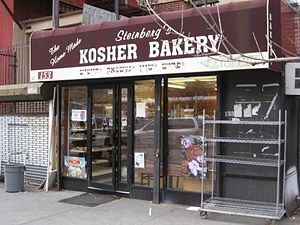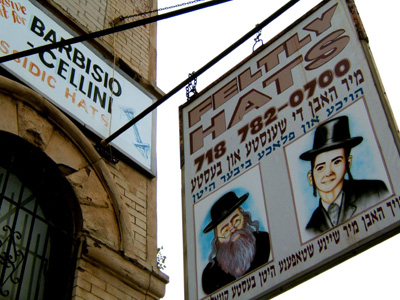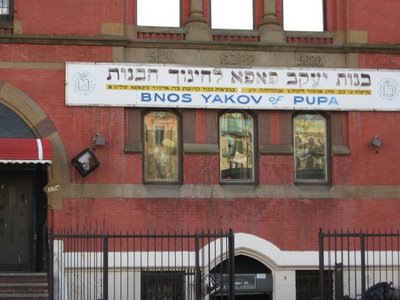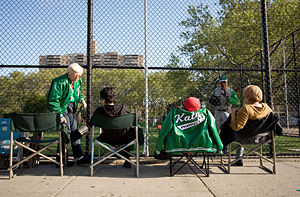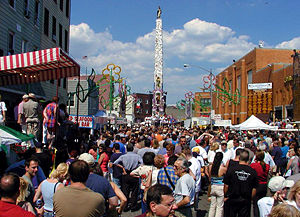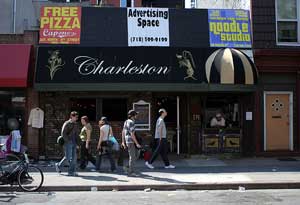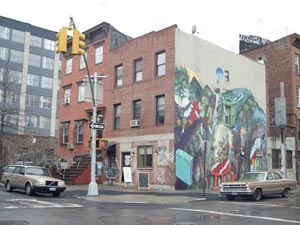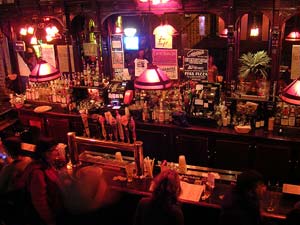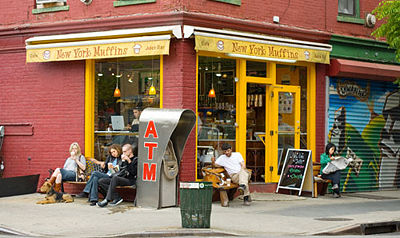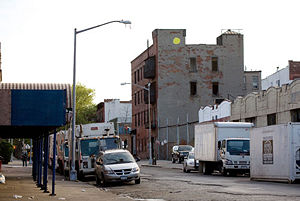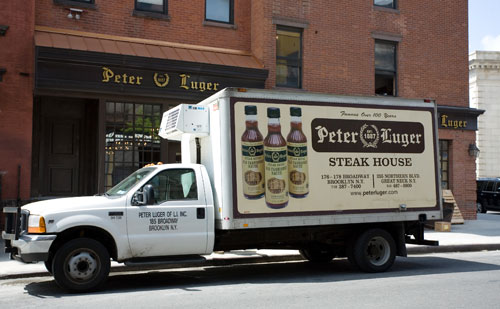From The Peopling of New York City
Contents |
A Diversity of Demographics
Once the Williamsburg Bridge in 1903 opened, thousands of immigrants and second-generation Americans moved to the Lower East Side. Today the census says Williamsburg is 49% Hispanic (predominantly Puerto Rican with rapidly increasing numbers of Dominicans and Ecuadorians), 40% non-Hispanic White (including Italians, Poles, Hasidim, and the majority of those called Bohemians or Yuppies), 9% non-Hispanic Black (many foreign-born), and 2% Asian (from all over).[1]
Hasidic Williamsburg
South Wiliamsburg(south of Division Avenue) is mostly occupied by the most insular of the Orthodox Yiddish-speaking Hasidic Jews -- the Satmar Hasids. After the destruction of Hungary and Transylvania's Jews during World War Two, the survivors of the Satmar and other hasids moved to New York. Satmar is known for its opposition to the secular state of Israel.The Satmars feel the need to recover with a vengeance after Hitler's attempt to exterminate them. Families with up to eight kids are common. Satmar is about outbreeding the Holocaust - they are the largest of Hasidic sects today. Williamsburg contains the largest concentration of Yiddish speakers in the world today.
The community is able to sustain its members by having access to stores selling kosher foods, religious "yeshiva" schools that Hasidic children must attend, and synagogues for sabbath and the ritual bath, mikvah.
South Side
North of this area, called the “South Side” is inhabited by Puerto Ricans and Domincans, who came here in the 1960s, attracted by the factory jobs. However, by the 1990s, the decline in manufacturing left thousands of Hispanics unemployed. More than 20,000 Latinos, mostly Puerto Rican, live in South Williamsburg, Brooklyn (locally known as Los Sures), which is one of the poorest neighborhoods in New York City.This heightened social problems like poverty, racism, and poor health care and education. [2]
The North Side
North of this area, known as “the North Side”—originally has been Polish and Italian but is becoming the home to a growing number of newcomers. The significant presence of the Italian community is especially evident during the celebration of the "Festa del Giglio"(feast of lillies) every summer. For two weeks every summer, the streets around the Lady of Mount Carmel church, located on Havemeyer and North 8th Streets, are highlights of a celebration of Italian culture. The defining events of the feast are the "Giglio Sundays" when a 100 foot tall statute, with a band and a singer, is carried around the streets in honor of Paulinus and Lady of Mount Carmel. [3]
The Hipster Haven
The Hipster part of Williamsburg is the strip of Bedford Avenue. Reminiscent of SoHo of Manhattan, Bedford Avenue is the scene of trendy bars, organic food stores, hip coffee shops and vintage boutiques. These businesses cater to the waves of artists have begun to settle in Williamsburg since the 1980s, attracted by the cheap rent and convenient proximity from Manhattan.
The community started off small but has gathered the largest artist community in the world – about 14,000 artists live here, many of which come from abroad. The community has established over 70 art galleries, a museum, hundreds of trendy international restaurants, coffee shops, bars, and nightclubs. North Side has become a trendy hotspot with a dynamic nightlife. However, there is lingering controversy due to the rising rents and disruption of the once well- established Polish and Italian communities.
East Williamsburg
East Williamsburg is comprised mostly of industrial spaces, and is largely Italian, American African American, and Hispanic between Williamsburg and Bushwick.
